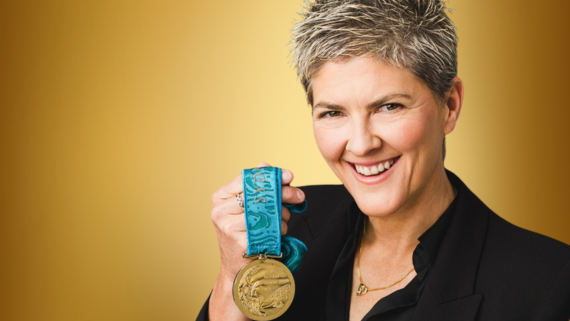
Subscribe to Spotify![]()
In today’s minisode, I’m going to cover getting the right person out of the wrong role.
In our Mini MBA Program, we bring together more than 20 executives from mainly around Australia and Asia Pacific, and one of the things we talk about a lot is getting the right people on the bus and the right people off the bus. What's interesting is when you've got the right people on the bus, but actually they're in the wrong seat and this can happen quite a lot, as evidenced by the attendees, who have this problem in their teams.
It can cause a whole range of issues, certainly for the individual who's in that role. They’re probably not feeling great about their career and they're probably under a lot more pressure than you’d think. I suspect they're not very happy on the inside and it's probably starting to play into their life away from work. It can impact culture as other members of the team can see there's someone struggling, but they're carrying the slack and that can really start to slow a team down. As a leader, you've got someone who you know is a good operator, but you just can't seem to work out how to get them into the right place.
So, what we’re going to discuss is not only being bold and courageous about how to deal with the following scenarios, but also a few technical things you can do that might actually help you do this more easily.
Scenario 1: Different environments
This is when you have a high performer in one role, but they’ve been moved to another part of the business. I remember when I was working with a utility and they had taken this wonderful leader as a senior manager in the business, who was leading their fleet of cars and trucks around the city. They moved him from that role to a central role to lead the transformation of health and safety. So a line management, operational kind of role into an influencer, strategic style role that at that point was really critical to the success of the business. And the poor guy failed.
So now he's struggling and a lot of that was to do with the skills that he required for the new role were almost completely new for him. He didn't know how to build the frameworks and the systems and the culture that goes with health & safety, and he didn't know how to influence the senior stakeholders.
They ended up actually having a really great conversation with this guy and apologised for not giving him the support to move into that role and got him back into his fleet management role, and he thrived once again.
Scenario 2: Underlying skills and mindset
This occurs when you have someone with a great attitude, they take ownership, they're trying so hard but they can't get results. The truth is that they're just not naturally gifted or encoded to do that kind of work. They might love the idea of the job and they're just a naturally driven person, but if they don't have the underlying core skills and mindset required for the role, it's always going to be tough.
An example is a salesperson in an analytical kind of role. They don't have that natural analytical mind that's going to make that job easy. The same with taking someone from an analytical role and putting them over in a sales job.
Scenario 3: Boredom
The next one is when you have a really good person, but they just look a bit lost, unmotivated and frankly, bored. Now, one of the things this normally tells me is that the challenge is no longer big enough for them.
Maybe they've been in that role for so long, it's become easy. You know you've got someone there that's ready for the next step or role, and they just need a lot more for themselves.
Scenario 4: Dropping back down
This happens when you have someone who was previously in a senior role (usually managing up) and now they've been dropped back down into a role that really is too small for them. So, not only is the technical part not difficult for them, but also the scope of the role, as they've grown beyond it. They've been up and they just can't come back down again; often that move back down can be a bit of a blow to their ego and their career aspirations.
So they really do need something that's going to challenge them, otherwise they can end up causing a little bit of trouble for the business and the culture. But if you look past the trouble and look into the heart of the person, what's really going on here is someone who is now well beyond where they're currently at.
Scenario 5: Long service
When you get someone who's joined an organisation in the early stages, and they've grown with it over 5, 10, or 15 years, and they've been in a mission critical role. In short, they’ve played a vital role to the organisation’s success – sometimes they've even been one of the heroes of the business. They're actually one of the core reasons you are where you are today as a business, they probably ‘bled’ for the cause and they often worked huge hours.
But right now, they've got to this point where the business is actually beyond them. The sophistication required, the systems that need to be built, they’re just not their skill set. They simply won’t be able to take the organisation to a whole new level again. That's when you really have to be quite courageous and have a really honest and truthful conversation about how you can help create a new picture of success for that individual, potentially outside of the business.
How to execute the solutions
Chief, leaders are dealers in hope. When you get the right person in the wrong role, I can tell you with confidence that in their heart and mind, things are not where they should be. They don't feel hope, they're probably starting to feel like their contribution is suffering and they think the future is cloudy for them. You've got to help them and sometimes this means really saving them from themselves, and having some really honest, heart-to-heart conversations. Help them find a future where there is great hope for them, where they can contribute in a way that they really can see. Ultimately, you have to find them the right role because this current scenario can't continue as it just hurts everybody.
So, have that initial discussion with them about how they're going in their role, what they're battling with and just listen. Treat them with the dignity and respect they deserve. Then research other options across your business and with any partner businesses externally or customers’ business. It's our job as leaders to help them find the job that's right for them.
What's more, if you're going to a partner or a customer and saying that you have someone in your business who could be a great fit for theirs, it’s a wonderful moment and shows you’re looking out for everyone, not just yourself.
It can really cost us if we don't take action. That in itself is a decision, to leave the status quo. But actually, it's not good for the team members, it's not good for the individual, it's not good for you, it's not good for the business, and it's not good for your clients, internal and external.
So Chief, cut through the stress and wander in and help this person find some hope.
Deal hope,
Greg
MINI-MBA IN LEADING HIGH PERFORMANCE TEAMS
Limited spaces per intake







